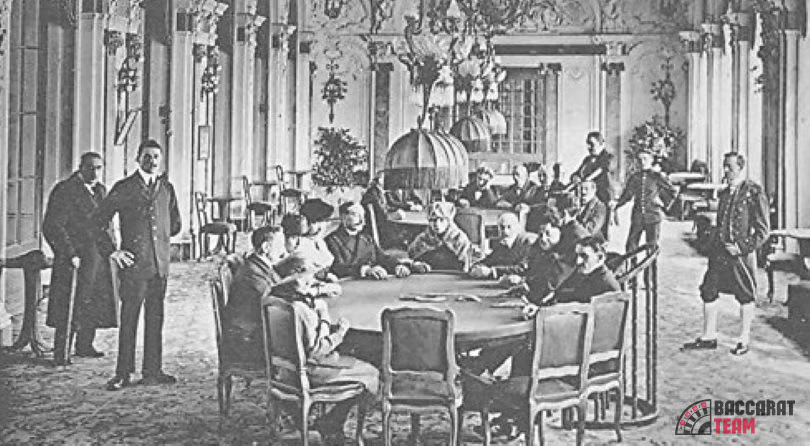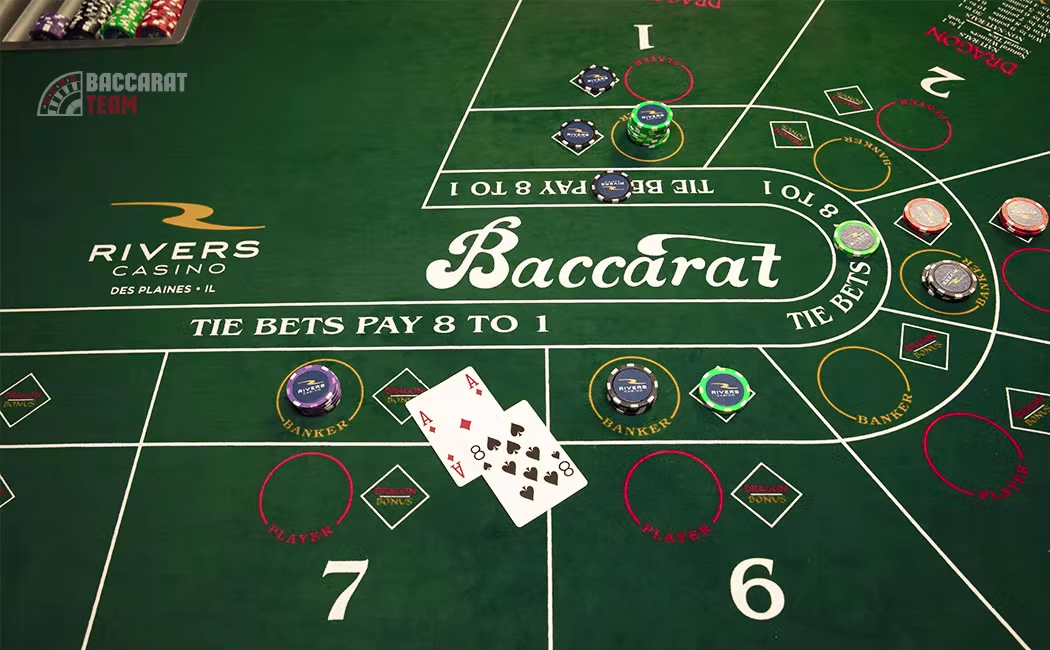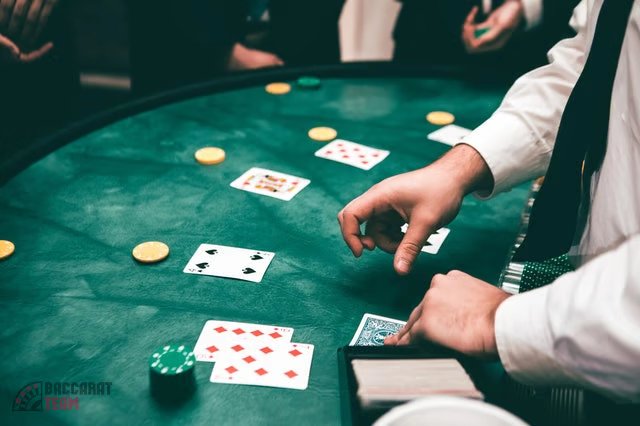History of Baccarat: From Ancient Times to Nowadays
One of the aspects that promoted Baccarat in the market was the fact that James Bond played this game. The list of bonuses that influences its appeal positively is the in-game low house edge and non-demanding learning curves for beginners. However, it takes something more to survive the test of time. What has happened to fuel its evolution from a plain time-killer for soldiers in the fifteenth century to a modern giant in the gambling industry? Stay tuned to check it out!
Author: Daniella Peterson
Published: 5 February 2024
Ancient Rituals
There are many storytelling lines, trying to describe the origin of the game. Although the major part of historians agree the solution people love today was developed in the fifteenth century, it doesn’t mean there are no earlier tracks of Baccarat. The first proven records come from the nineteenth century, so all the other beliefs and opinions have a theoretical background mostly. How plausible this or that story is, everyone should decide on their own:
- One model asserts Chinese non-card amusement activities to be the progenitor of Baccarat. The pattern correlations have been discovered, enabling aficionados to pair the evaluated approach with alternatives such as Pai Gow. Although the latter was performed utilizing tiles, the highest score coincided – nine points.
- Baccarat's origin dates back to Roman Empire, where it was applied in a unique ceremony to look into the future. The primary premise was to roll the dice and gauge one's faith based on the outcome. If eight or nine emerged, participants could become high spiritual leaders. Other answers, with the exception of seven and six, led to no good.
Italian Roots
The previously mentioned explanations are fascinating, but they don't clarify why current variations are performed "employing" cards then instead of dice or tiles. The first documented mention of table card gaming can be located in a French chronicle from the fourteenth century. Taking into account the production process of cards, these entertainment options were far from popular. Thanks to the spread of Chines techniques through Marco Polo’s journeys, a similar technology of stamp-printing with wooden blocks was introduced in the local market.
The invention of the printing press was a bombshell not only for publishing books and similar materials but also for gaming. Back then, such games’ packs contained seventy-eight cards. One of the original types of Baccarat expanded the market, and that was revealed in a published material under the title of The Devil’s Picture Books.
There are quite a few possible ancestors of Baccarat in the gaming field:
- Ignoring the reality that this pastime is widely assumed to have emerged in France, archival signs point to Italy as the game's cradle. Despite the fact that there is no direct link between the analyzed champion and Tarrochi, the latter is acknowledged as the origin of almost any game of cards. There are even allegations that the designer was an Italian named Felix Falguiere.
- Macao is the next leading contender on the list of possible forebears, and it, too, had an analogous recipe for success.
- Last but not least, the oldest form of the analyzed game could be related to Le Her. As in the case of Macao from Italy, the rule to score nine points was valid. Unlike modern versions, it was a duo battle where each member was handed one card. Another similarity is the opportunity to exchange the present hand (with some exceptions, of course).
- Later on, Vingt-et-en entertainment options like Baccarat en Banque were linked to Baccarat. Although further releases of the book separated this game and Chemin de Fer, their mutual basics were revealed.

How It Was Played in France
This period was a crucial milestone in Baccarat history. Given the cost of the card production, it is obvious that this entertainment wasn’t extremely accessible. According to hearsay stories, soldiers introduced the suggested gameplay in the country the wards with Italy at the end of the fifteenth century. Chemin de Fer and Baccarat Deux Tableaux were quite sought-after pastime options for the French nobility.
The constant increase in their popularity even caused a serious ban on gambling from authorities, initiated by Louis Phillip in the forties of the nineteenth century. However, this only made Baccarat a popular noble yet illegal adventure time. The first confirmed reference to the pastime was in the printed gaming analysis by Charles Van-Tenac in the 1950s from the same century. From a mathematical standpoint, a detailed breakdown of the en Banque version of the adventure time was provided.
How It Arrives in the United States
There are articles that let enthusiasts understand when this transition took place, namely, in 1871. Although, some mention the publishing materials of 1911 as more true to reality. You will come across several stories from the New York Times, describing the path of the gaming varietal and what attitudes toward it gamblers had. Journalists gathered information about what happened in playing clubs on the boards at Long Branch and other locations. Commonly, the introduction of the solution is believed to take place in the late years of the nineteenth century and its debut at the beginning of the twenties century.
As hearsay stories say, Baccarat was popularized decades earlier in the United States than it is officially stated. Its popularity faced its own ups and downs. For instance, regardless of the fact gambling was legalized in the forties, it was still absent in the real money gaming land-based market. Chemmy came back to casinos over twenty years later. One of the rumored fans is Mark Twain.
However, the situation drastically changed in 1959 with the implementation of the Punto Banco version in land-based casinos. It was a remake of Baccarat that was popular in Argentina in the fifties of the twentieth century. The Las Vegas Sands created casino history when it unveiled such a table that year. Although it was an epic fail for the casino, the initial losses didn’t give up on Punto Banco. And this strategy turned out to prove its profitability, especially in the long run. In the seventies, it was a fashionable game — only fifteen tables in Vegas. If you wanted to play Baccarat, you had to invest a lot. That was a luxury for rich and famous personalities.
Overall, that was the period when Baccarat was introduced to local gambling houses. The twentieth century became an epoch of the significant peak of the solution, and the number of documentary-proven facts is impressive. Despite the fact that it didn’t hit the record above the debut of craps and Blackjack, it managed to become one of the top three entertainment versions.

🌎 The Popularity of the Game Nowadays
On the Las Vegas strip, this game wasn’t represented really close to what Renzoni introduced based on the version from Argentina. Games excluded tie bets and offered a chance to place a side stake on natural hands. To avoid any inconveniences and unfairness, casinos applied wax to ensure bills would lay flat on the gaming surface. The preference was given to cash wagers, but they weren’t gladly accepted for payouts because of the wax used. In turn, chips started prevailing in the industry in the seventies.
After all, there are plenty of distinctions between conventional Baccarat and models that were prominent just a few decades ago around the world. The notoriety of the play was heavily affected by the existence of opulent gaming halls. Female gaming took place as well, but it was mostly for the purpose of expressing their enthusiasm with minimum wagering and making new contacts.
Baccarat of today is a more dynamic and vibrant phenomenon. With the invention of online gaming, as well as multiple variations of fast-paced gameplay, it is an insane chance for interesting parties to enter the gambling universe of card games. The experiences of Baccarat in Asia also brought new features to the ground, complementing the game’s divergence. In the online medium, it was one of the first solutions that were adopted and modified.

📜 Wrap It Up
All in all, Baccarat is a universal gambling opportunity for interested parties around the globe. You will come across its versions at both small and large-scale businesses online and offline. Live dealer games, as well as the ability to play on the go through mobile versions/applications, can’t help but inspire more users to test this game and find out why millions of fans are so passionate about it.

 Top 3
Top 3













































